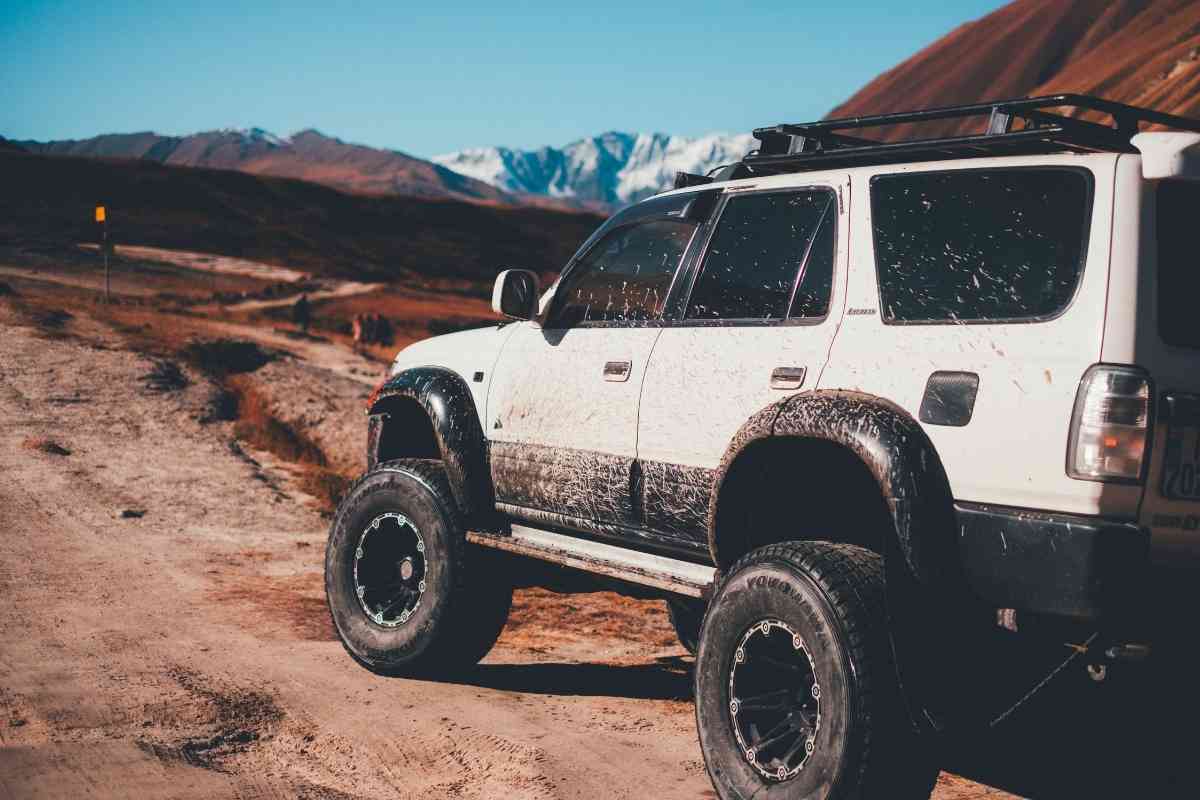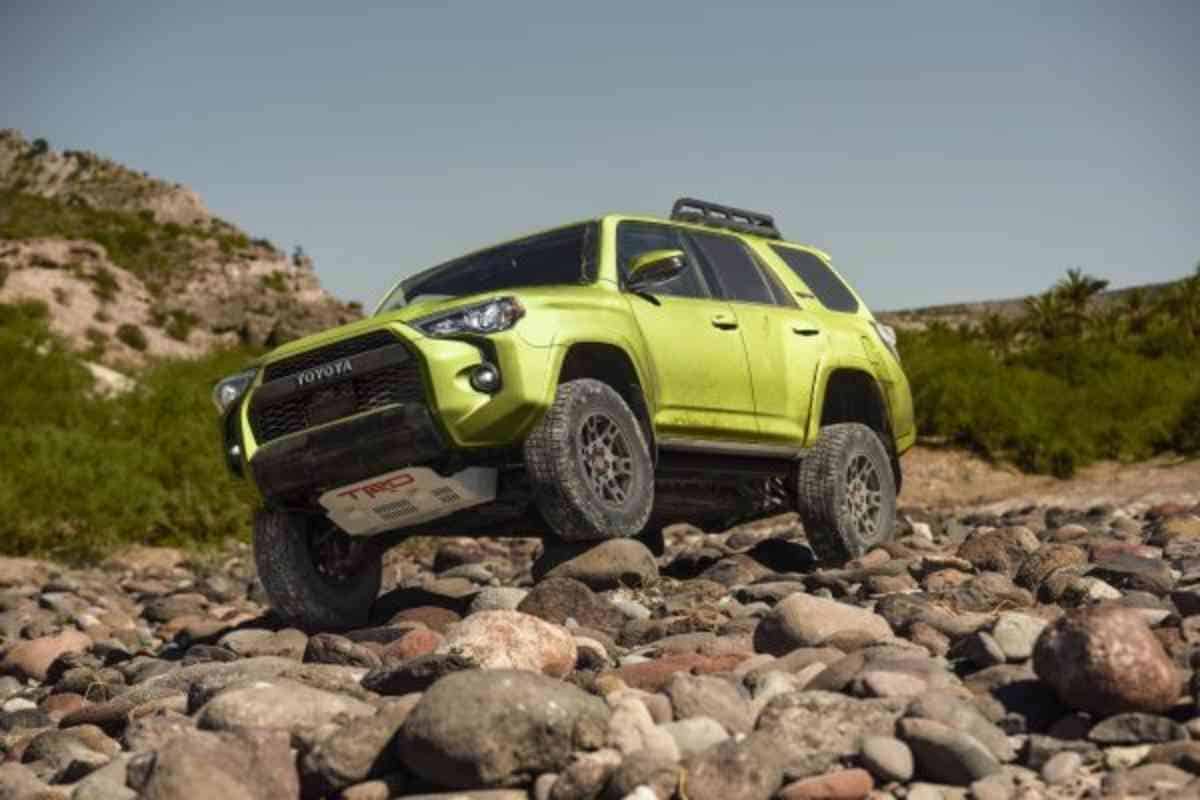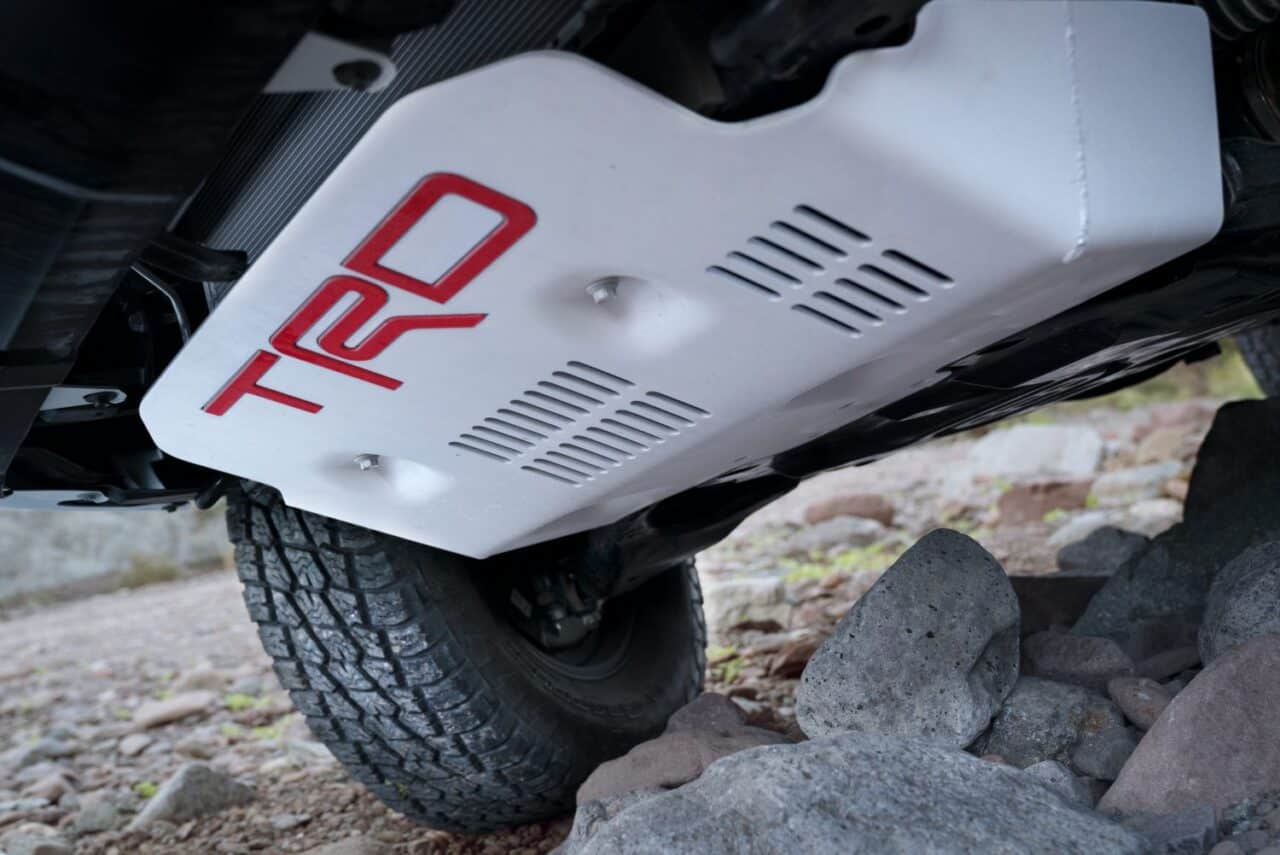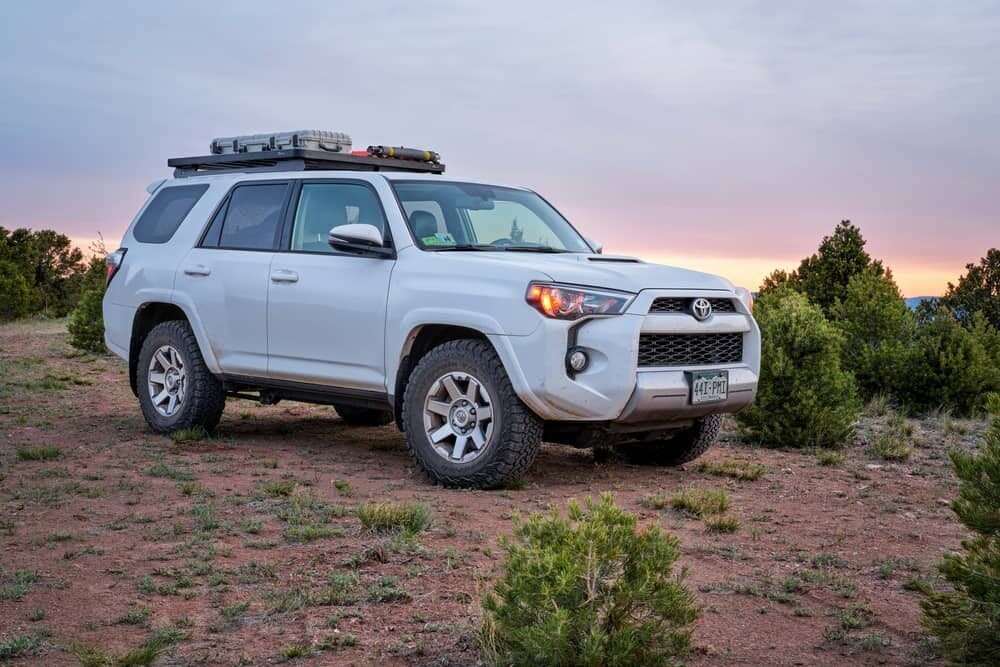Toyota 4Runners: All The Things You Need To Know
You’ve read about the 4Runner’s excellent off-roading ability, rugged construction, and legendary reliability. But, there are many details that you might not know. These information tidbits are a great way to learn more about your car.
If you have questions about the Toyota 4Runner, keeping reading this article! And, if you haven’t, be sure to check out all the articles we’ve done on this trusty offroader. We’ll link them throughout this piece. So, let’s get into them.

While you are researching 4Runners, be sure to bookmark the Toyota 4Runner category page and save these popular articles for future reading: What Are The Best and Worst Years for The Toyota 4Runner?, What Problems do Toyota 4runners Have?, and 4Runner Maintenance Costs: Are 4runners Expensive To Maintain?
What Does ECO Mean On My Toyota 4Runner?
In the Toyota 4Runner, ECO means that you’ve activated the Eco mode, which means that the engine not only moves the vehicle, but it also generates electricity for all the electric parts. The more we have turned on, the more the powerplant must work.
The Toyota 4Runner has an eco-mode that aims to reduce the engine’s work. The vehicle’s system regulates air conditioning, heated seats, and other components in this mode.
This mode helps you reduce both fuel consumption and emissions. So, you can say that it stands for both economic and ecological driving.
Eco mode is ideal for stop-and-go driving, in which fuel consumption increases. Toyota recommends that you don’t use this mode for going uphill or overtaking vehicles on the highway. Let’s talk about another control, which helps you achieve higher RPMs.
What Is The ECT PWR Button On A Toyota 4Runner?
Toyota has worked to improve the 4Runner’s already aging automatic transmission. One improvement is the ECT PWR button, which stands for Electronically Controlled Transmission, Power.
When you press this button, the system allows you to shift at higher RPMs, which allows the engine to develop a complete power range. It’s an ideal tool for when you need to accelerate quickly and heavily, such as off-roading, towing, or overtaking. But, keep in mind that, unlike the ECO mode, this feature might increase your fuel consumption.
Where’s The Starter On A Toyota 4Runner?
The Toyota 4Runner is a very reliable SUV, as we’ve written about it on our site. But, even the best components wear out. One of these is the starter. So, it’s helpful to know where it’s located.
In the Toyota 4Runner, the starter is mounted under the engine and to the right-hand side (meaning, the passenger side) in most versions. However, the fourth-generation 4Runner, produced between 2002 and 2009, comes with a 4.7L V8. This engine has the starter mounted on top, between the two top cylinder banks.
Replacing these units requires that you remove the intake manifold. Depending on where you live, this service will cost from $175 up to $750.
Be it a V8 or a V6, the 4Runner can be thirsty. Let’s find out more about how much fuel it can take.
How Many Gallons Are In A Toyota 4Runner Fuel Tank?
The Toyota 4Runner comes with a 23-gallon fuel tank. The 4Runner averages between 13 and 19 miles-per-gallon. This means you can have a maximum driving range of approximately 430 miles in the best driving conditions.
With such range, and the ability to fit up to seven passengers, the 4Runner is ideal for long trips. And we know that this SUV can drive hundreds of thousands of miles. Read our article on its reliability. But, for now, let’s talk about its interior.
Does The Toyota 4Runner Have Captain’s chairs?
Captain’s chairs are individual seats that come with armrests. They are much more comfortable for one passenger but can hinder access to other rows. Plus, the design makes them not ideal for fitting child seats.
The Toyota 4Runner doesn’t come with Captain’s Chairs. It uses a “bench” seat for the second row and, if you opt for the seven-seat configuration, the third-row seats are foldable. The second row is comfortable and can easily fit a child seat. The third row is ideal for younger children.
Third-row seating is only available in some of the 4Runner’s trims, including the SR5. Let’s look at them in detail.
What Does SR5 Mean On The Toyota 4Runner?
The Toyota 4Runner comes in four trim levels: the SR5, Limited, TRD, and TRD Pro. You might have heard of the SR5 moniker for years, and it has a fascinating history behind it.
SR5 originally stood for Sport Rally 5-Speed. Toyota began racing in the sixties and seventies. Back then, it wanted to promote its racing prowess and the inclusion of a 5-speed manual transmission. These were big at the time. So, they created the SR5 badge.
In 1975, with the introduction of the Toyota HiLux to international markets, Toyota badged some of them with the SR5 name. But the name had nothing to do with rallying. Instead, it meant that the HiLux came with a 5-speed manual transmission, a bigger engine, and upscale interiors and trim.
As the brand evolved into more products, the SR5 became a trim level. It usually indicated improvements like sportier looks, firmer suspensions, and other options. In the case of the Toyota 4Runner, ironically, the SR5 is the base trim level.

What Does H4F Mean On The Toyota 4Runner?
Basically, this is the most economical gear for daily driving. The Toyota 4Runner is a tough, rugged offroader. While you can get yours in 2WD, the four-wheel-drive version will give the most bang for your buck. There are part-time and full-time 4WD versions.
The term H4F is only available in those Toyota 4Runners with full-time 4WD. The following table explains which models come with part-time and full-time 4WD:
| Trim Level | 2WD | 4WD | Locking rear differential |
| SR5 | Standard | Optional | No |
| SR5 Premium | Standard | Optional | No |
| TRD Off-Road | No | Part-time | No |
| TRD Off-Road Premium | No | Part-time | No |
| TRD Pro | No | Part-time | No |
| Limited | No | Full-time | Yes |
| Nightshade | No | Full-time | Yes |
If you’re driving a full-time 4WD 4Runner, you might notice a knob near the shifter that has the following letter:
- H4F
- H4L
- L4L
These are the high and low-range gears that help you traverse challenging terrain. Let’s go through them one by one:
- H4F stands for High Speed (or High Range), Free. Your 4Runner is driving with the high-range gearing, and the central differential isn’t locked (free). This mode is ideal for everyday driving. You get the highest economy, reduced wear, and quietest ride. It’s important to know. As we’ve written before, the transmission is one of the 4Runner’s weak points.
- H4L stands for High Speed (or High Range), Locked. Your 4Runner is driving with the high-range gearing, and the central differential is locked. Use this for driving in gravel, off-road driving, snow, or muddy terrains.
- L4L stands for Low Speed (or Low Range), Locked. Your 4Runner is driving with low-range gearing, and the central differential is locked. This mode uses maximum power and traction. It’s ideal for descending steep hills, extreme terrain, and pulling in the sand, mud, or deep snow.
What Is Trac On The Toyota 4Runner?
In a Toyota 4Runner, Trac is short for Traction Control System. Sensors constantly detect driving conditions such as traction and aggressive steering. When the vehicle senses that it’s losing grip, the engine will reduce power to the wheel with less traction. Also, it might apply braking to the wheels that require it.
This system helps you maintain stability in slippery conditions such as snow or heavy rain. Some vehicles might also come with the A-Trac system, which is the Active Traction Control.

Once activated, the A-Trac system monitors and distributes power and torque between the front and rear wheels. The vehicle then avoids unnecessary wheel spin and skidding.
If a wheel has no grip, the system will apply the brakes on these and send the power to the wheels that have traction. This way, the 4Runner can get out of challenging terrain with more ease. It’s important to highlight that you should use the A-Trac system with the L4L gearing (known as 4LO in some models).
The A-Trac system is available in the following 4WD 4Runners: SR5, SR5 Premium, Limited, TRD Off-Road, TRD Off-Road Premium, and TRD Pro. It’s these features that make it a prevalent choice for adventurers.
Final Roundup
There are many details that one might not know about the Toyota 4Runner, even if it’s very popular. This article aimed to give all the facts you need to know about this rugged and reliable 4×4.
The Toyota 4Runner has improved over the years. Features include traction control, improved transmissions, seven-seat configurations, and others.
Toyota has also upgraded engine management. The Eco mode reduces power to electronics around the vehicle to reduce the engine’s workload.
Then, there’s the ECT, or Electronically Controlled Transmissions, which allows the driver to shift at higher revs. The engine can develop the full power and torque curve, which helps in towing, off-roading and overtaking. But, it can lead to getting fewer miles out of the tank.
Known as a rugged off-roading vehicle, the 4Runner has low-range gearing in many of its trim levels. It came in either part-time or full-time 4WD; the latter can also include the A-Trac system. This advanced traction control system regulates power and torque between the front and rear wheels. When stuck, this helps the vehicle get out of the most challenging terrains.
We hope that you’ve learned more about the Toyota 4Runner, what makes it stand out, and what features have improved it over the years.
More 4Runner Resources
If you enjoyed reading about the Toyota 4Runner, you will surely appreciate my other related articles. These articles delve deeper into specific aspects of the 4Runner such as its off-road capabilities, interior design and technology features.
Additionally, I have compared the 4Runner to other popular SUVs in its class to help you make an informed decision about your next vehicle purchase. Give them a read; I am sure you will find them as interesting and informative as the first article.



